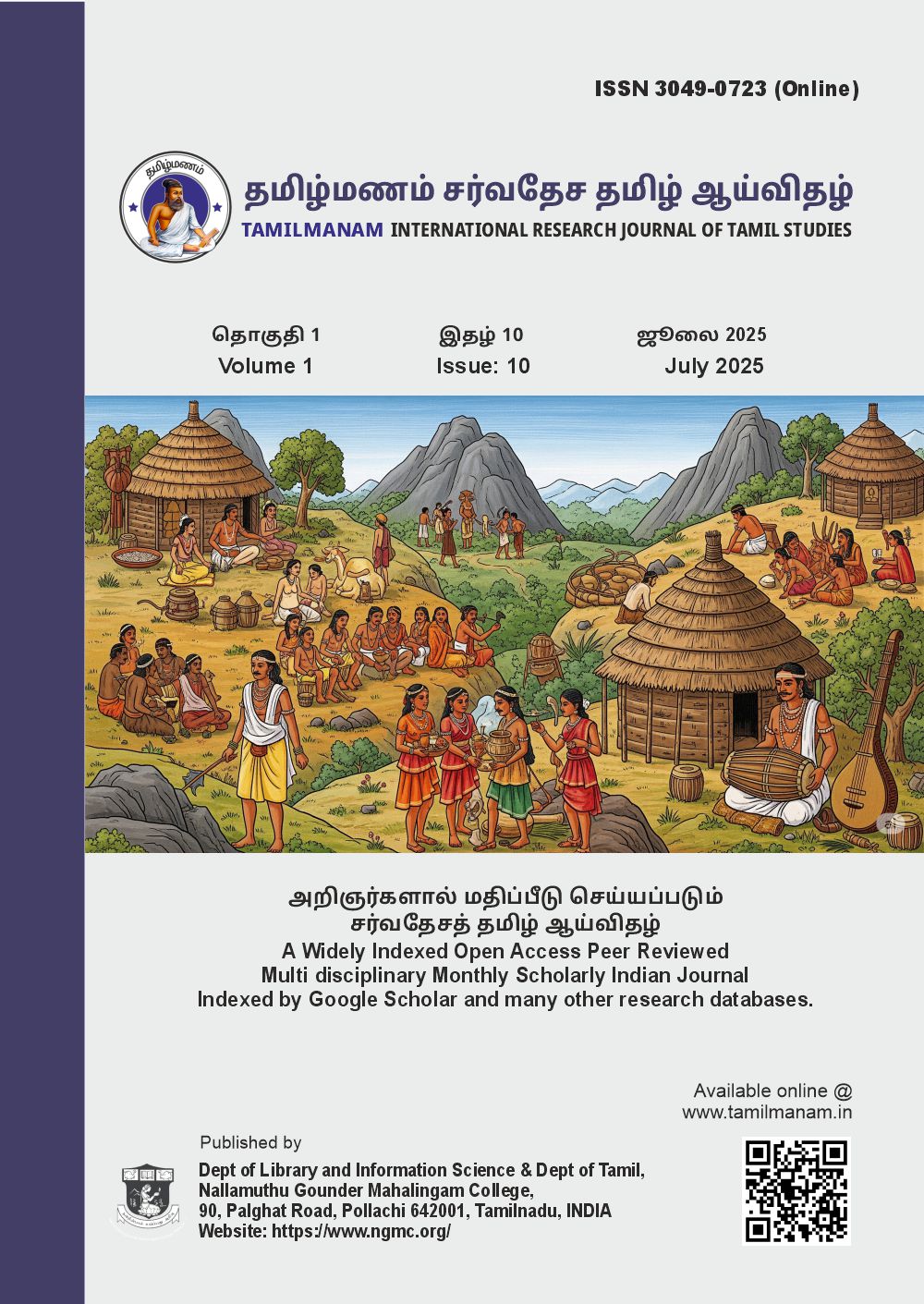A Comparative Study of the Case System in Tamil and Bengali
ஒப்பீட்டு நோக்கில் தமிழ் வங்காள வேற்றுமை இலக்கணம்
DOI:
https://doi.org/10.63300/tm0110202511Keywords:
Comparative Grammar, Case System, Dravidian and Indo-Aryan Languages, Language ContactAbstract
The significance of language studies is increasingly recognized across the world today, leading to extensive research in this field. Tamil, one of the most ancient languages of the Indian subcontinent, has influenced and interacted with several other Indian languages over time. A comparative study of these interactions helps trace the historical and structural relationships between languages during their stages of origin and development. Historically, Bengal has shared longstanding connections with the Tamil-speaking community through trade, politics, spirituality, art, and literature. These interactions have left noticeable imprints on both languages. Despite belonging to two distinct language families-Tamil to the Dravidian and Bengali to the Indo-Aryan- this article undertakes a comparative grammatical analysis to explore possible similarities in their linguistic dynamics. Specifically, it examines the structure and function of case system in Tamil and Bengali, focusing on their forms, types, distribution, methods of formation, and semantic variations.
Downloads
References
1. Balasundaram Pavalareru, S. (Annot.). (2022). Tholkaappiyam (Vol. 2): Sollathikaram—Research commentary. Periyar University, Salem.
2. Chatterji, S. K. (1926). The origin and development of the Bengali language, Part II: Morphology, Bengali Index. Calcutta University Press.
3. Kothandaraman, P. (1997). A grammar of contemporary literary Tamil. International Institute of Tamil Studies, Chennai.
4. Mazumdar, B. (1927). The history of the Bengali language (2nd ed.). Calcutta University Press.
5. Milne, W. S. (1913). A practical Bengali grammar. Cotton Press, Calcutta.
6. Nuhman, M. A. (2017). Basic Tamil grammar (3rd ed.). Adaiyalam Pathippagam, Tiruchy.
7. Paramasivam, K. (2017). Contemporary Tamil tradition. Adaiyalam Pathippagam, Tiruchy.
8. Roy, R. (1826). Bengalee grammar in the English language. Unitarian Press, Calcutta.
9. Sankareswari, P. (2015). Tamil and Sanskrit grammatical traditions. Pavai Pathippagam, Chennai.
10. Subramanian, S. V. (Ed.). (2013). Tamil grammatical works (3rd ed.). Meyyappan Pathippagam.
11. Subramanian, S. V. (2016). Tholkaappiyam: A clear commentary. Manivasagar Pathippagam, Chennai.
12. Thamotharan, A. (Ed.). (1999). Nannul: Text and elaborate commentary (Original work by Pavananthi Munivar). International Institute of Tamil Studies, Chennai.
Downloads
Published
Issue
Section
License
Copyright (c) 2025 Shanmugapriya R (Author)

This work is licensed under a Creative Commons Attribution 4.0 International License.
Our journal adopts CC BY License Creative Commons Attribution 4.0 International License http://Creativecommons.org//license/by/4.0/ . It allows using, reusing, distributing and reproducing of the original work with proper citation.






